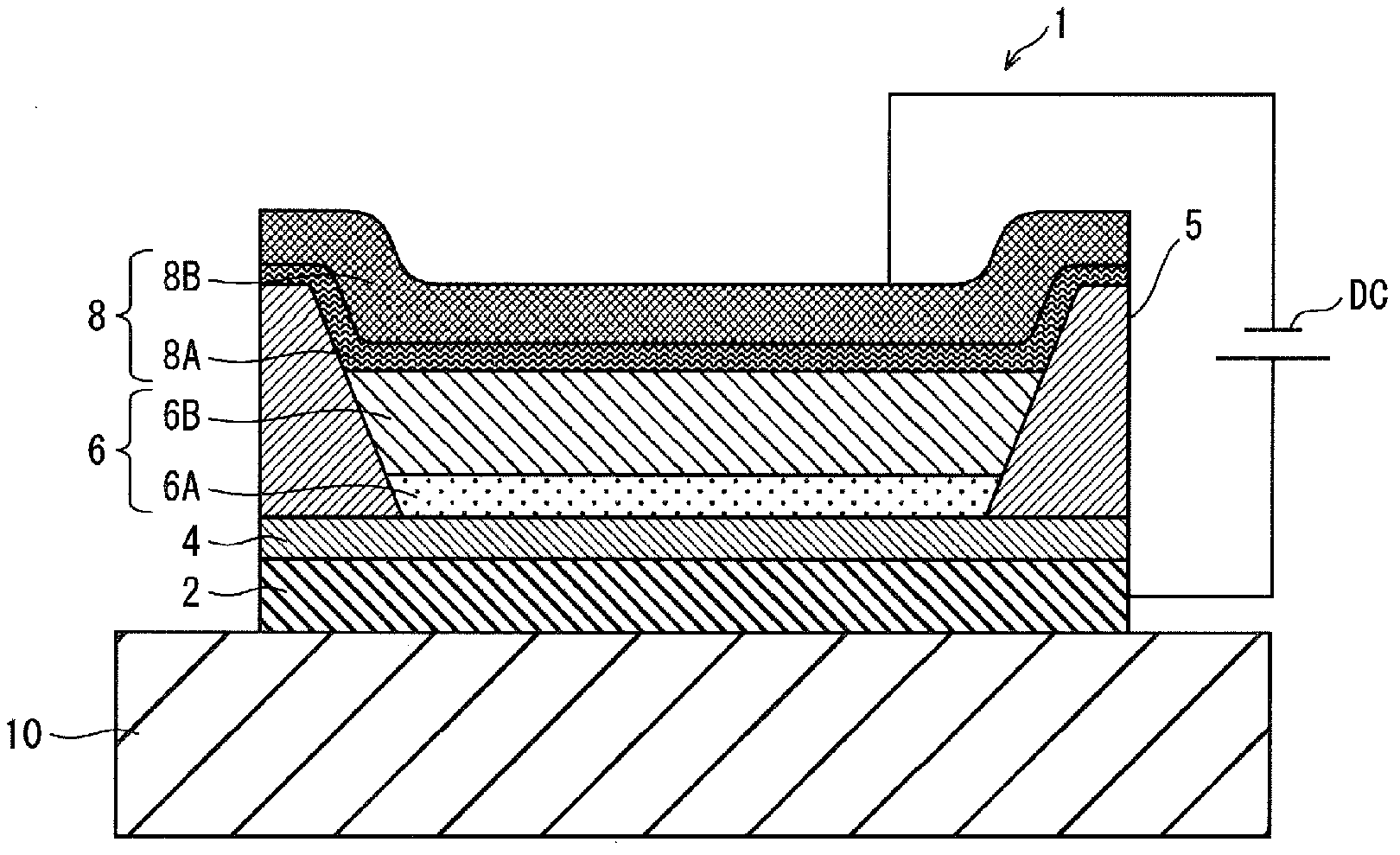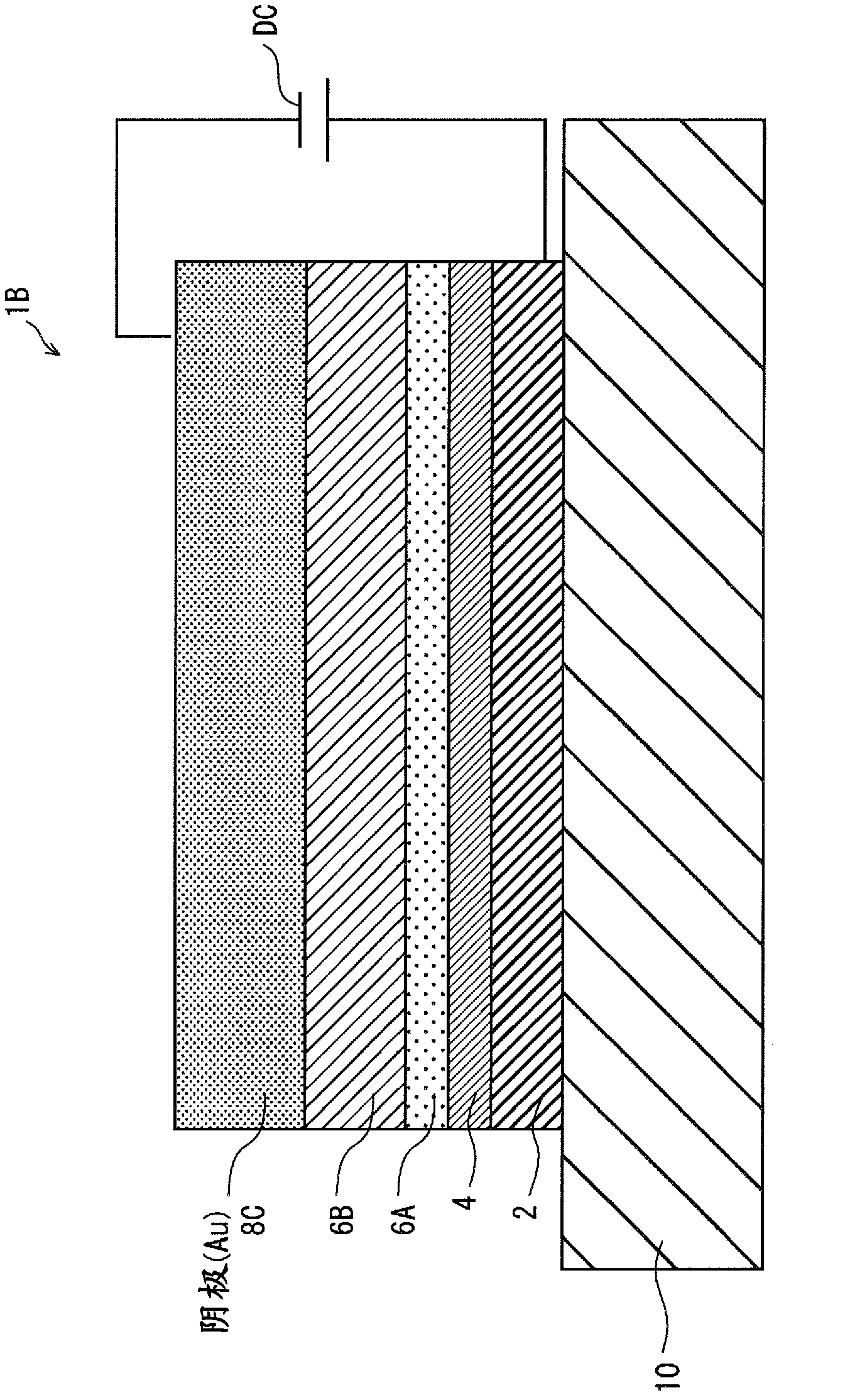Organic EL element
一种元件、有机的技术,应用在有机电致发光元件领域,能够解决功耗增大、无法制作显示器、难以确保掩模对位精度等问题,达到空穴注入效率高、优异发光效率、实现性优异的效果
- Summary
- Abstract
- Description
- Claims
- Application Information
AI Technical Summary
Problems solved by technology
Method used
Image
Examples
Embodiment approach 1
[0119] (Structure of organic EL element)
[0120] figure 1 It is a schematic cross-sectional view showing the structure of the organic EL element 1 of the first embodiment.
[0121] The organic EL element 1 is a coating type in which a functional layer is formed by coating by a wet process, and has a structure in which a hole injection layer 4 and various functional layers (here, a buffer layer 6A and a light emitting layer 6B) are placed on top of each other. Interposed between the electrode pair consisting of the anode 2 and the cathode 8 in a stacked state, the various functional layers include organic materials having predetermined functions.
[0122] Specifically, as figure 1 As shown, the organic EL element 1 is formed by stacking an anode 2, a hole injection layer 4, a buffer layer 6A, a light emitting layer 6B, and a cathode 8 (a barium layer 8A and an aluminum layer 8B) on one main surface of a substrate 10 in the following order. constituted. A power supply DC is...
Embodiment approach 2
[0335]
[0336] Figure 25 (a) is a schematic cross-sectional view showing the structure of the organic EL element 1C according to the present embodiment. Figure 25 (b) is a partially enlarged view near the hole injection layer 4A.
[0337] The organic EL element 1C is, for example, a coating type in which a functional layer is formed by coating by a wet process, and has a structure in which a hole injection layer 4 and various functional layers are stacked on each other between the anode 2 and the Between the pair of electrodes constituted by the cathode 8D, the various functional layers include organic materials having predetermined functions.
[0338] Specifically, in the organic EL element 1C, an anode 2, an ITO layer 3, a hole injection layer 4A, a buffer layer 6A, a light emitting layer 6B, an electron injection layer 7, and a cathode 8D are laminated on one main surface of a substrate 10 in the following order. , Sealing layer 9 and constitute. The following descr...
PUM
 Login to View More
Login to View More Abstract
Description
Claims
Application Information
 Login to View More
Login to View More - R&D
- Intellectual Property
- Life Sciences
- Materials
- Tech Scout
- Unparalleled Data Quality
- Higher Quality Content
- 60% Fewer Hallucinations
Browse by: Latest US Patents, China's latest patents, Technical Efficacy Thesaurus, Application Domain, Technology Topic, Popular Technical Reports.
© 2025 PatSnap. All rights reserved.Legal|Privacy policy|Modern Slavery Act Transparency Statement|Sitemap|About US| Contact US: help@patsnap.com



